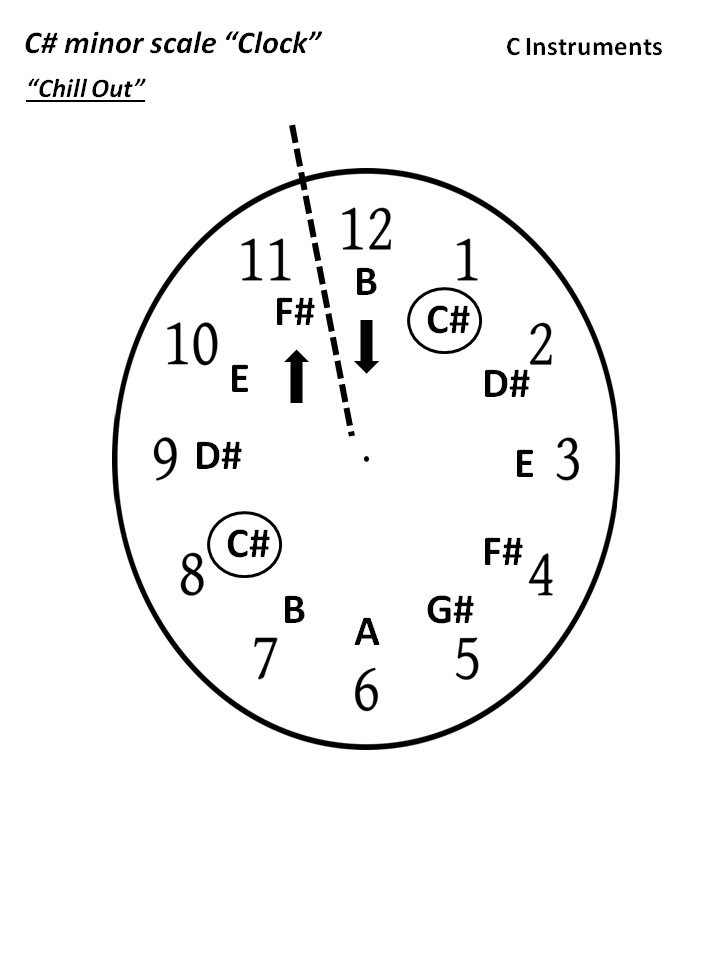"Chill Out"
“Chill Out” from the Creative Commons:
“Chill Out” is one of the songs from the “Creative Commons” which I use with this curriculum. The very slow tempo and “haunting” harmonies offer a different kind of challenge for its improviser’s. What makes it so unusual, is that the “shaping” of its improvisation melody is far more significant than the application of varying velocities. There is no “Count 0ff” audio file needed for “Chill Out”, since it uses a very basic 32 counts, 4 chords, and 2 bars each format. Soloists should rotate every 8 bars (after the 12 bar introduction), and it will not be far into the song until the participating soloists will be able to “feel” when each person’s eight measure “rotation” should begin and end. For both the i-Pad and traditional keyboards there an easier set of parts, allowing the song to be played at two different “challenge levels”, or both levels simultaneously. Finally, it is in the key of C# minor, making a very difficult song for wind instrumentalists, but no obstacle at all for formatted grey i-Pad keyboard maps, or a “black and white” traditional keyboard using a transposition of “+04”. So, sit back, “Chill Out”, and enjoy.
"Chill Out" Supporting Melodies Flute Voices 1 & 2:
"Chill Out" Supporting Melodies French Horn Voices 1 & 2:
"Chill Out" Sustained String Voices 1 & 2:
"Chill Out" Sustained String Voices 3 & 4:
"Chill Out" Sustained String Voices Easy:
"Chill Out" Smart Piano and Bass Map:
"Chill Out" Supporting Melodies Counting Sheet:
"Chill Out" Sustained Strings and Smart Piano Bass Counting:
"Chill Out" Color Coded Traditional Keyboard Scales Overlay Sheet:
"Chill Out" Resource Audio File MP3:
"Chill Out" Keyboard 1st, 2nd, & 3rd Alternate Melodies:
"Chill Out" Keyboard Bass, High and Low:
"Chill Out" Piano Chords (Keyboard Harmony):
"Chill Out" Keyboard Counting Sheets, All Parts:
“Chill Out”
Although I only recently completed the C# minor scale clock, I thought I would attach it to the end of this project page. It offers a unique opportunity to explore soloing options for a minor scale, in a very slow “straight 8th note” ballad style. Not to mention exposing your students to a key that is rarely used for wind instruments. There are no “count offs” in the resource MP3. The entire song is a single eight bar, four chord progression phrase. After the 12 bar the first soloist should begin and then the solos that follow should alternate every eight measures. I am very sure you will enjoy hearing solos that your young “improvisationalists” come up with (“click” image below).
